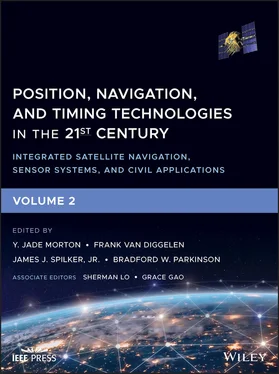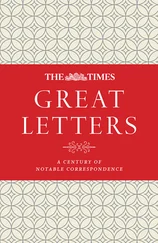43 43 J. Khalife and Z. Kassas, “Precise UAV navigation with cellular carrier phase measurements,” in Proceedings of IEEE/ION Position, Location, and Navigation Symposium, April 2018, pp. 978–989.
44 44 J. Morales, P. Roysdon, and Z. Kassas, “Signals of opportunity aided inertial navigation,” in Proceedings of ION GNSS Conference, September 2016, pp. 1492–1501.
45 45 J. Morales, J. Khalife, and Z. Kassas, “Collaborative autonomous vehicles with signals of opportunity aided inertial navigation systems,” in Proceedings of ION International Technical Meeting Conference, January 2017, 805–818.
46 46 J. Lee and L. Miller, CDMA Systems Engineering Handbook, 1st Ed., Norwood, Massachusetts: Artech House, 1998.
47 47 TIA/EIA‐95‐B, “Mobile station‐base station compatibility standard for dual‐mode spread spectrum systems,” October 1998.
48 48 A. Viterbi, CDMA: Principles of Spread Spectrum Communication, Redwood City, California: Addison Wesley Longman Publishing Co., 1995.
49 49 3GPP2, “Upper layer (layer 3) signaling standard for cdma2000 spread spectrum systems,” 3rd Generation Partnership Project 2 (3GPP2), TS C.S0005‐F v2.0, May 2014.
50 50 3GPP2, “Physical layer standard for cdma2000 spread spectrum systems (C.S0002‐E),” 3rd Generation Partnership Project 2 (3GPP2), TS C.S0002‐E, June 2011.
51 51 3GPP2, “Recommended minimum performance standards for cdma2000 spread spectrum base stations,” December 1999.
52 52 R. Vaughn, N. Scott, and D. White, “The theory of bandpass sampling,” IEEE Transactions on Signal Processing, vol. 39, no. 9, pp. 1973–1984, September 1991.
53 53 D. van Nee and A. Coenen, “New fast GPS code‐acquisition technique using FFT,” Electronics Letters, vol. 27, no. 2, pp. 158–160, January 1991.
54 54 E. Kaplan and C. Hegarty, Understanding GPS: Principles and Applications, 2nd Ed., Artech House, 2005.
55 55 P. Misra and P. Enge, Global Positioning System: Signals, Measurements, and Performance, 2nd Ed., Ganga‐Jamuna Press, 2010.
56 56 ETSI, “Universal mobile telecommunications system (UMTS); base station (BS) radio transmission and reception (FDD),” 2015.
57 57 A. van Dierendonck, P. Fenton, and T. Ford, “Theory and performance of narrow correlator spacing in a GPS receiver,” NAVIGATION, Journal of the Institute of Navigation, vol. 39, no. 3, pp. 265–283, September 1992.
58 58 T. Humphreys, J. Bhatti, T. Pany, B. Ledvina, and B. O’Hanlon, “Exploiting multicore technology in software‐defined GNSS receivers,” in Proceedings of ION GNSS Conference, September 2009, pp. 326–338.
59 59 S. Fischer, “Observed time difference of arrival (OTDOA) positioning in 3GPP LTE,” Qualcomm Technologies, Inc., Tech. Rep., June 2014.
60 60 M. Hofer, J. McEachen, and M. Tummala, “Vulnerability analysis of LTE location services,” in Proceedings of Hawaii International Conference on System Sciences, January 2014, pp. 5162–5166.
61 61 3GPP, “Evolved universal terrestrial radio access (E‐UTRA); physical channels and modulation,” 3rd Generation Partnership Project (3GPP), TS 36.211, January 2011. [Online]. Available: http://www.3gpp.org/ftp/Specs/html‐info/36211.htm
62 62 S. Sesia, I. Toufik, and M. Baker, LTE, The UMTS Long Term Evolution: From Theory to Practice. Wiley Publishing, 2009.
63 63 K. Shamaei, J. Khalife, and Z. Kassas, “Comparative results for positioning with secondary synchronization signal versus cell specific reference signal in LTE systems,” in Proceedings of ION International Technical Meeting Conference, January 2017, pp. 1256–1268.
64 64 K. Shamaei, J. Khalife, and Z. Kassas, “Performance characterization of positioning in LTE systems,” in Proceedings of ION GNSS Conference, September 2016, pp. 2262–2270.
65 65 K. Shamaei, J. Khalife, and Z. Kassas, “Exploiting LTE signals for navigation: Theory to implementation,” IEEE Transactions on Wireless Communications, vol. 17, no. 4, pp. 2173–2189, April 2018.
66 66 I. Kim, Y. Han, and H. Chung, “An efficient synchronization signal structure for OFDM‐based cellular systems,” IEEE Transactions on Wireless Communications, vol. 9, no. 1, pp. 99–105, January 2010.
67 67 F. Benedetto, G. Giunta, and E. Guzzon, “Initial code acquisition in LTE systems,” Recent Patents on Computer Science, vol. 6, pp. 2–13, April 2013.
68 68 M. Morelli and M. Moretti, “A robust maximum likelihood scheme for PSS detection and integer frequency offset recovery in LTE systems,” IEEE Transactions on Wireless Communications, vol. 15, no. 2, pp. 1353–1363, February 2016.
69 69 J. van de Beek, M. Sandell, and P. Borjesson, “ML estimation of time and frequency offset in OFDM systems,” IEEE Transactions on Signal Processing, vol. 45, no. 7, pp. 1800–1805, July 1997.
70 70 3GPP, “Evolved universal terrestrial radio access (E‐UTRA); multiplexing and channel coding,” 3rd Generation Partnership Project (3GPP), TS 36.212, January 2010. [Online]. Available: http://www.3gpp.org/ftp/Specs/html‐info/36212.htm
71 71 Y. Wang and R. Ramesh, “To bite or not to bite‐a study of tail bits versus tail‐biting,” in Proceedings of Personal, Indoor and Mobile Radio Communications, vol. 2, October 1996, pp. 317–321.
72 72 W. Ward, “Performance comparisons between FLL, PLL and a novel FLL‐assisted‐PLL carrier tracking loop under RF interference conditions,” in Proceedings of ION GNSS Conference, September 1998, pp. 783–795.
73 73 K. Shamaei, J. Khalife, and Z. Kassas, “Ranging precision analysis of LTE signals,” in Proceedings of European Signal Processing Conference, August 2017, pp. 2788–2792.
74 74 K. Shamaei, J. Khalife, and Z. Kassas, “Pseudorange and multipath analysis of positioning with LTE secondary synchronization signals,” in Proceedings of Wireless Communications and Networking Conference, 2018, pp. 286–291.
75 75 M. Braasch and A. van Dierendonck, “GPS receiver architectures and measurements,” Proceedings of the IEEE, vol. 87, no. 1, pp. 48–64, January 1999.
76 76 J. del Peral‐Rosado, J. Lopez‐Salcedo, G. Seco‐Granados, F. Zanier, and M. Crisci, “Evaluation of the LTE positioning capabilities under typical multipath channels,” in Proceedings of Advanced Satellite Multimedia Systems Conference and Signal Processing for Space Communications Workshop, September 2012, pp. 139–146.
77 77 J. del Peral‐Rosado, J. Lopez‐Salcedo, G. Seco‐Granados, F. Zanier, and M. Crisci, “Joint maximum likelihood time‐delay estimation for LTE positioning in multipath channels,” in Proceedings of EURASIP Journal on Advances in Signal Processing, special issue on Signal Processing Techniques for Anywhere, Anytime Positioning, September 2014, pp. 1–13.
78 78 C. Gentner, B. Ma, M. Ulmschneider, T. Jost, and A. Dammann, “Simultaneous localization and mapping in multipath environments,” in Proceedings of IEEE/ION Position Location and Navigation Symposium, April 2016, pp. 807–815.
79 79 C. Gentner, T. Jost, W. Wang, S. Zhang, A. Dammann, and U. Fiebig, “Multipath assisted positioning with simultaneous localization and mapping,” IEEE Transactions on Wireless Communications, vol. 15, no. 9, pp. 6104–6117, September 2016.
80 80 3GPP2, “Recommended minimum performance standards for cdma2000 spread spectrum base stations,” 3rd Generation Partnership Project 2 (3GPP2), TS C.S0010‐E, March 2014. [Online]. Available: http://www.arib.or.jp/english/html/overview/doc/STD‐T64v7_00/Specification/ARIB_STD‐T64‐C.S0010‐Ev2.0.pdf
81 81 L. Ljung, System identification: Theory for the User, 2nd Ed., Prentice Hall PTR, 1999.
82 82 J. Proakis and D. Manolakis, Digital Signal Processing, Prentice Hall, Upper Saddle River, NJ, 1996.
Читать дальше











